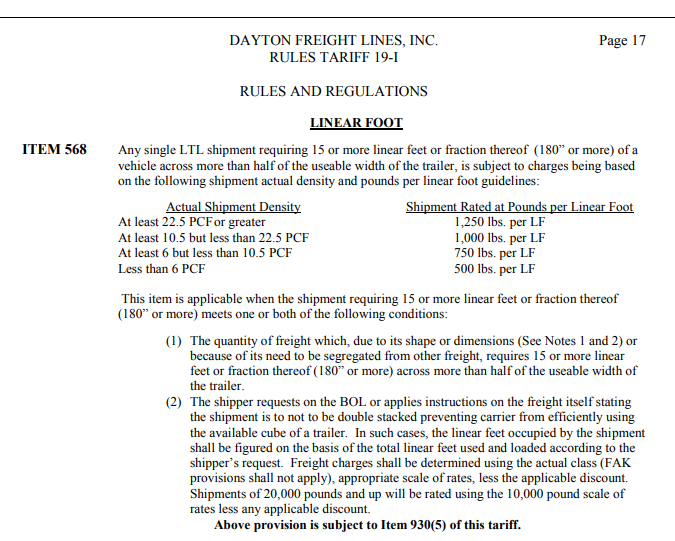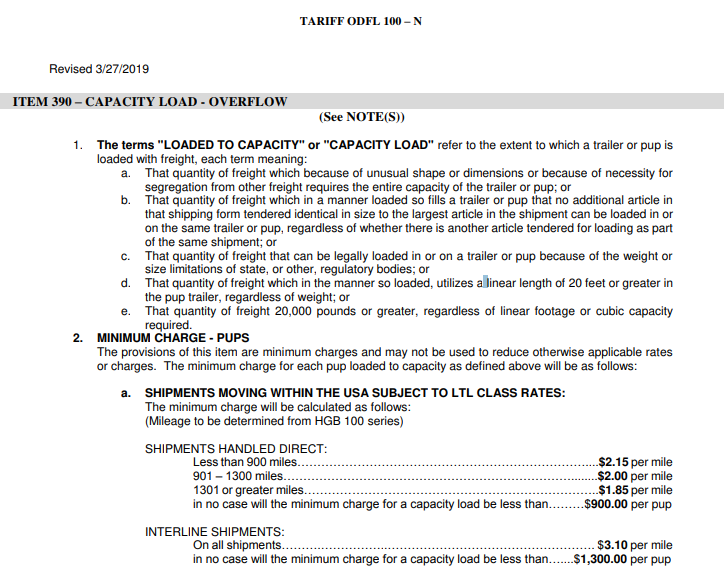When managing your supply chain operations and logistics performance, it’s important to be aware of which carriers you are leveraging for fulfillment and the core strengths of their coverage. Often a single-threaded approach with one LTL carrier is not the best way to optimize your logistics costs.
To help give more context, listed below are some of the top National and Regional carriers per ‘Logistics Management’ based on revenue and growth in 2018:
Regional Carriers:
- Holland Freight
- Dayton Freight
- Averitt Express
- Pitt Ohio Transportation Group
- AAA Cooper Transportation
- Reddaway
- A. Duie Pyle
- New Penn Motor Express
- Oak Harbor Freight Lines
- Southeastern Freight Lines
National Carriers:
- FedEx Freight
- Old Dominion Freight Line
- XPO Logistics
- YRC
- Estes
- UPS Freight
- ABF Freight
- R&L Carriers
- Saia Motor Freight Lines
- Daylight Transport
While the majority of these carriers will do a great job of moving your freight, there are a number of key factors to keep in mind when choosing the best carrier mix for your business, including:
1. Coverage & Carrier Partnerships
Direct Coverage
Both National and Regional carriers have a direct service area or core focus market where they operate. It is ideal to leverage direct service points within your carrier mix for optimal shipping performance. Similar to having a direct flight on an airplane to your destination, this reduces time in transit, complexities involved during the trip, and provides a better gauge and visibility into when you will arrive at the destination.
Typically, national carriers service most of the US with direct coverage, while regional carriers have direct coverage within their focus markets only.
Extended Network Coverage & Interlined Freight
Often you can leverage a carrier’s extended network to move your shipment outside of their direct service area. Rather than these shipments being handled directly by the same carrier for the full duration of transit, the shipment will be transferred to their partner carrier for delivery. Similar to having a connecting flight on an airplane to your destination, this can bring some additional challenges including longer transit times, complexities involved with the transfer (i.e. missed connections, lost/damaged items, etc.), and reduces visibility into the tracking of progress to delivery.
If you plan to utilize a carrier’s extended network, it is important to understand the quality of their partners’ service in addition to their direct service areas to ensure this is a good option for supporting your operations.
2. Pricing
Discounts & Minimums
Regional carriers have significantly lower minimum charges than National carriers for moving freight within a shorter distance (intrastate or into a nearby bordering state). For example, a Regional carrier will often offer minimum charges between $60-80 a shipment for these shorter distance moves, while minimum charges for the same lanes from National carriers are typically between $100-$130. In our experience, discounted rates between Regional and National carriers will follow similar structures.
Furthermore, National carriers will typically have better discounts and minimums for long-haul shipments than the Regional players. Since National carriers leverage their own trucks to move the freight and don’t need to share profit with their cartage partners for interlining shipments, you will likely get the most competitive rate on a long-haul shipment working with a National carrier.
Pallet Rates
Although carriers are slowly shying away from pallet rates, Regional carriers who have more flexibility in their operations and corporate structure still have these services available. For the majority, these are not available unless by special request with National carriers. Rather than these shipments being calculated by NMFC class and weight, pallet rates are a flat fee for each pallet shipped regardless of the commodity.
Pallet rates also have certain guiding rules, including the weight and pallet size needing to be under a certain threshold (i.e. 2,500 lbs and 48” L x 48 W” x 72 H”). If your pallet exceeds these guidelines, it will be charged as two pallets. Depending on your product mix and weights, pallet rates can be a cost-effective way to move freight.
3. Linear Foot Rules & Capacity
Regional and National carriers have different guidelines regarding how much space you can leverage for one shipment on their truck before you are assessed with overcharges. Here are common ranges of linear foot rules for both carrier types:

You can cycle between two tariff examples from both Regional and National carriers below:


As you can see, National carriers usually provide more space on the truck for an LTL shipment which can help when sending larger orders. When you exceed the allowed space on a truck per the Linear Foot Rules, an order goes from an LTL shipment to an LTL Volume or Cubic Capacity. If you attempt to send a standard LTL shipment out that exceeds these requirements, you will be hit with a significant overcharge. This could come in the form of an additional minimum charge, extra charge based on the density of the shipment, or added cost per mile. You will need to be cognizant when shipping larger orders to help ensure you are within the guidelines for each specific carrier.
4. Customer Service
One additional area to be aware of is the difference in corporate structures between National and Regional carriers. While both National and Regional carriers will do an overall good job communicating with you and supporting your business, Regional carriers typically have increased flexibility within their corporate governance and are able to resolve issues and requests in a more timely manner. This can have a big impact on your experience when requesting invoice corrections, claims, special requests, volume quotes, etc.
Conclusion
Overall, there is a variety of differentiating factors when deciding which type of carrier is best to service your operations. Aspects such as coverage, pricing, specific carrier shipping rules (e.g. Linear Feet & Capacity), and customer service are a few key focus areas to keep in mind. Leveraging the right mix of LTL carriers will help significantly reduce your shipping expenses and service failures, enabling you to provide the best possible customer experience.

